Shanshan Lv
Efficient Long Sequential User Data Modeling for Click-Through Rate Prediction
Sep 25, 2022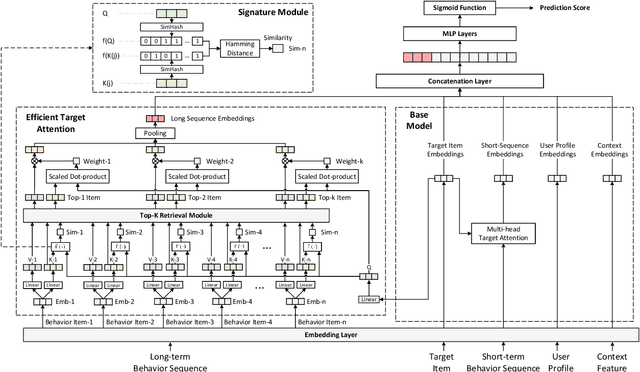

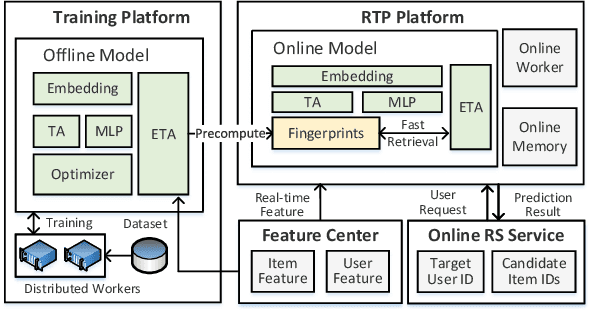
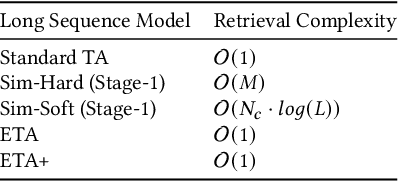
Abstract:Recent studies on Click-Through Rate (CTR) prediction has reached new levels by modeling longer user behavior sequences. Among others, the two-stage methods stand out as the state-of-the-art (SOTA) solution for industrial applications. The two-stage methods first train a retrieval model to truncate the long behavior sequence beforehand and then use the truncated sequences to train a CTR model. However, the retrieval model and the CTR model are trained separately. So the retrieved subsequences in the CTR model is inaccurate, which degrades the final performance. In this paper, we propose an end-to-end paradigm to model long behavior sequences, which is able to achieve superior performance along with remarkable cost-efficiency compared to existing models. Our contribution is three-fold: First, we propose a hashing-based efficient target attention (TA) network named ETA-Net to enable end-to-end user behavior retrieval based on low-cost bit-wise operations. The proposed ETA-Net can reduce the complexity of standard TA by orders of magnitude for sequential data modeling. Second, we propose a general system architecture as one viable solution to deploy ETA-Net on industrial systems. Particularly, ETA-Net has been deployed on the recommender system of Taobao, and brought 1.8% lift on CTR and 3.1% lift on Gross Merchandise Value (GMV) compared to the SOTA two-stage methods. Third, we conduct extensive experiments on both offline datasets and online A/B test. The results verify that the proposed model outperforms existing CTR models considerably, in terms of both CTR prediction performance and online cost-efficiency. ETA-Net now serves the main traffic of Taobao, delivering services to hundreds of millions of users towards billions of items every day.
WSSS4LUAD: Grand Challenge on Weakly-supervised Tissue Semantic Segmentation for Lung Adenocarcinoma
Apr 14, 2022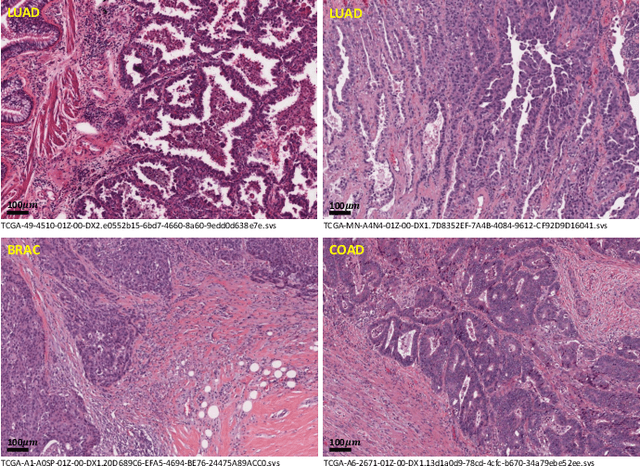
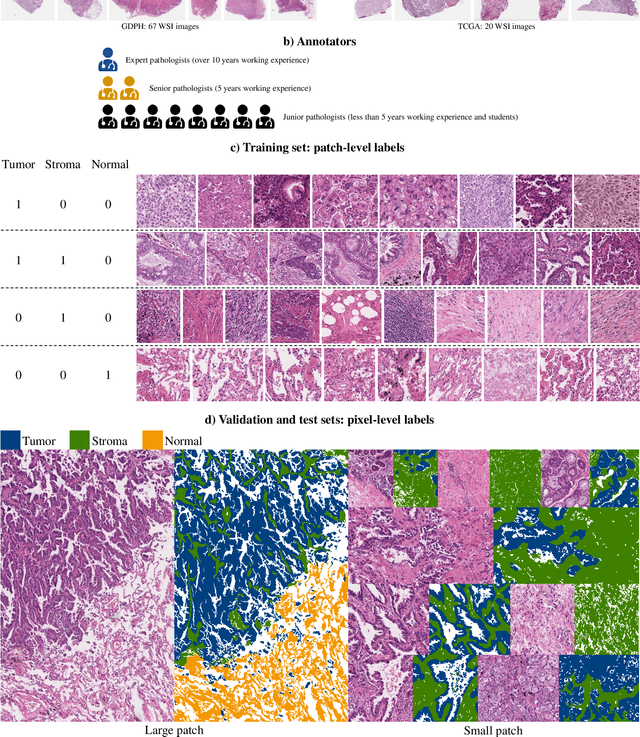
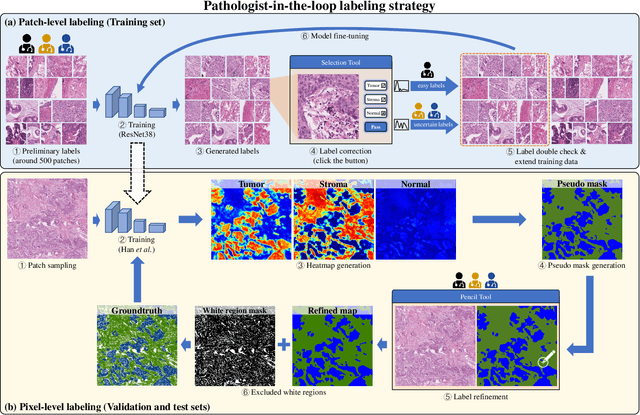
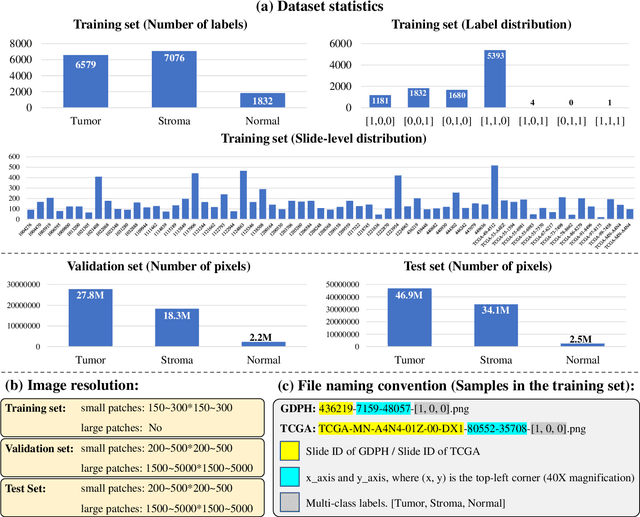
Abstract:Lung cancer is the leading cause of cancer death worldwide, and adenocarcinoma (LUAD) is the most common subtype. Exploiting the potential value of the histopathology images can promote precision medicine in oncology. Tissue segmentation is the basic upstream task of histopathology image analysis. Existing deep learning models have achieved superior segmentation performance but require sufficient pixel-level annotations, which is time-consuming and expensive. To enrich the label resources of LUAD and to alleviate the annotation efforts, we organize this challenge WSSS4LUAD to call for the outstanding weakly-supervised semantic segmentation (WSSS) techniques for histopathology images of LUAD. Participants have to design the algorithm to segment tumor epithelial, tumor-associated stroma and normal tissue with only patch-level labels. This challenge includes 10,091 patch-level annotations (the training set) and over 130 million labeled pixels (the validation and test sets), from 87 WSIs (67 from GDPH, 20 from TCGA). All the labels were generated by a pathologist-in-the-loop pipeline with the help of AI models and checked by the label review board. Among 532 registrations, 28 teams submitted the results in the test phase with over 1,000 submissions. Finally, the first place team achieved mIoU of 0.8413 (tumor: 0.8389, stroma: 0.7931, normal: 0.8919). According to the technical reports of the top-tier teams, CAM is still the most popular approach in WSSS. Cutmix data augmentation has been widely adopted to generate more reliable samples. With the success of this challenge, we believe that WSSS approaches with patch-level annotations can be a complement to the traditional pixel annotations while reducing the annotation efforts. The entire dataset has been released to encourage more researches on computational pathology in LUAD and more novel WSSS techniques.
End-to-End User Behavior Retrieval in Click-Through RatePrediction Model
Aug 10, 2021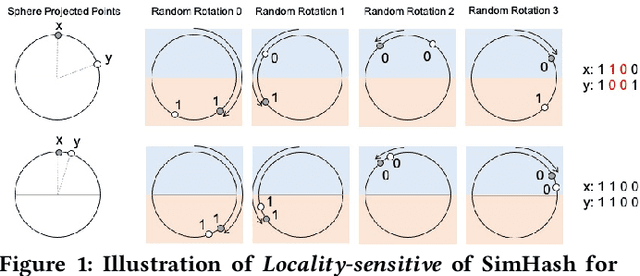
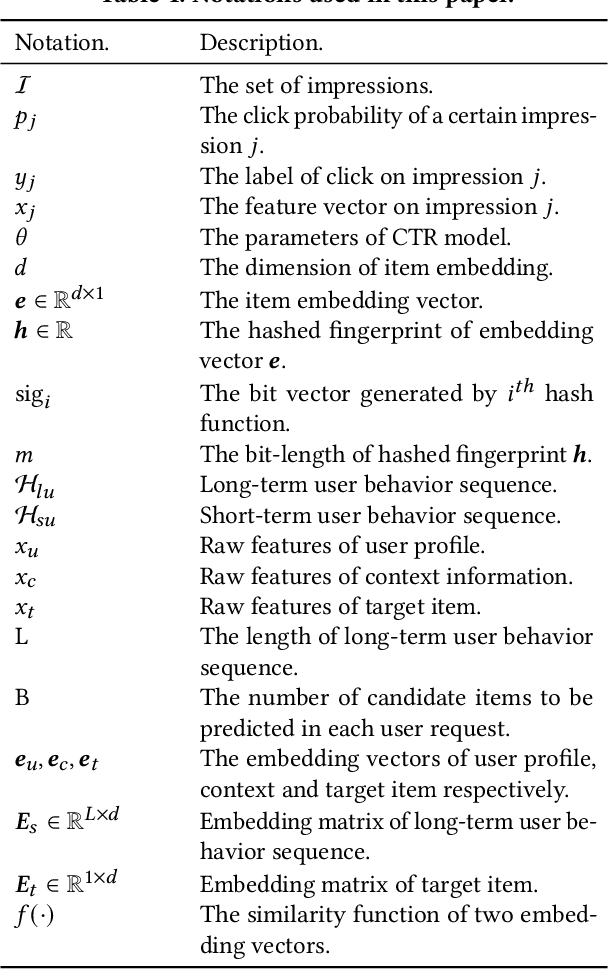
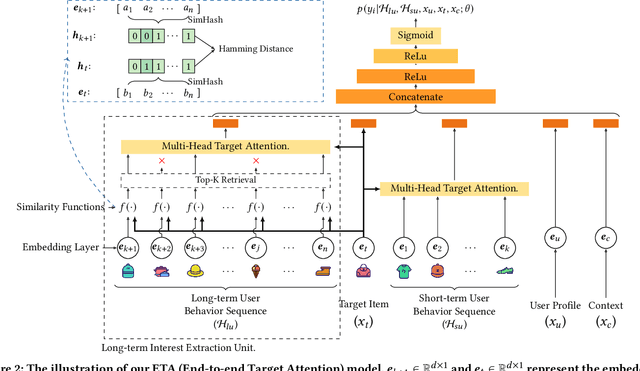

Abstract:Click-Through Rate (CTR) prediction is one of the core tasks in recommender systems (RS). It predicts a personalized click probability for each user-item pair. Recently, researchers have found that the performance of CTR model can be improved greatly by taking user behavior sequence into consideration, especially long-term user behavior sequence. The report on an e-commerce website shows that 23\% of users have more than 1000 clicks during the past 5 months. Though there are numerous works focus on modeling sequential user behaviors, few works can handle long-term user behavior sequence due to the strict inference time constraint in real world system. Two-stage methods are proposed to push the limit for better performance. At the first stage, an auxiliary task is designed to retrieve the top-$k$ similar items from long-term user behavior sequence. At the second stage, the classical attention mechanism is conducted between the candidate item and $k$ items selected in the first stage. However, information gap happens between retrieval stage and the main CTR task. This goal divergence can greatly diminishing the performance gain of long-term user sequence. In this paper, inspired by Reformer, we propose a locality-sensitive hashing (LSH) method called ETA (End-to-end Target Attention) which can greatly reduce the training and inference cost and make the end-to-end training with long-term user behavior sequence possible. Both offline and online experiments confirm the effectiveness of our model. We deploy ETA into a large-scale real world E-commerce system and achieve extra 3.1\% improvements on GMV (Gross Merchandise Value) compared to a two-stage long user sequence CTR model.
 Add to Chrome
Add to Chrome Add to Firefox
Add to Firefox Add to Edge
Add to Edge